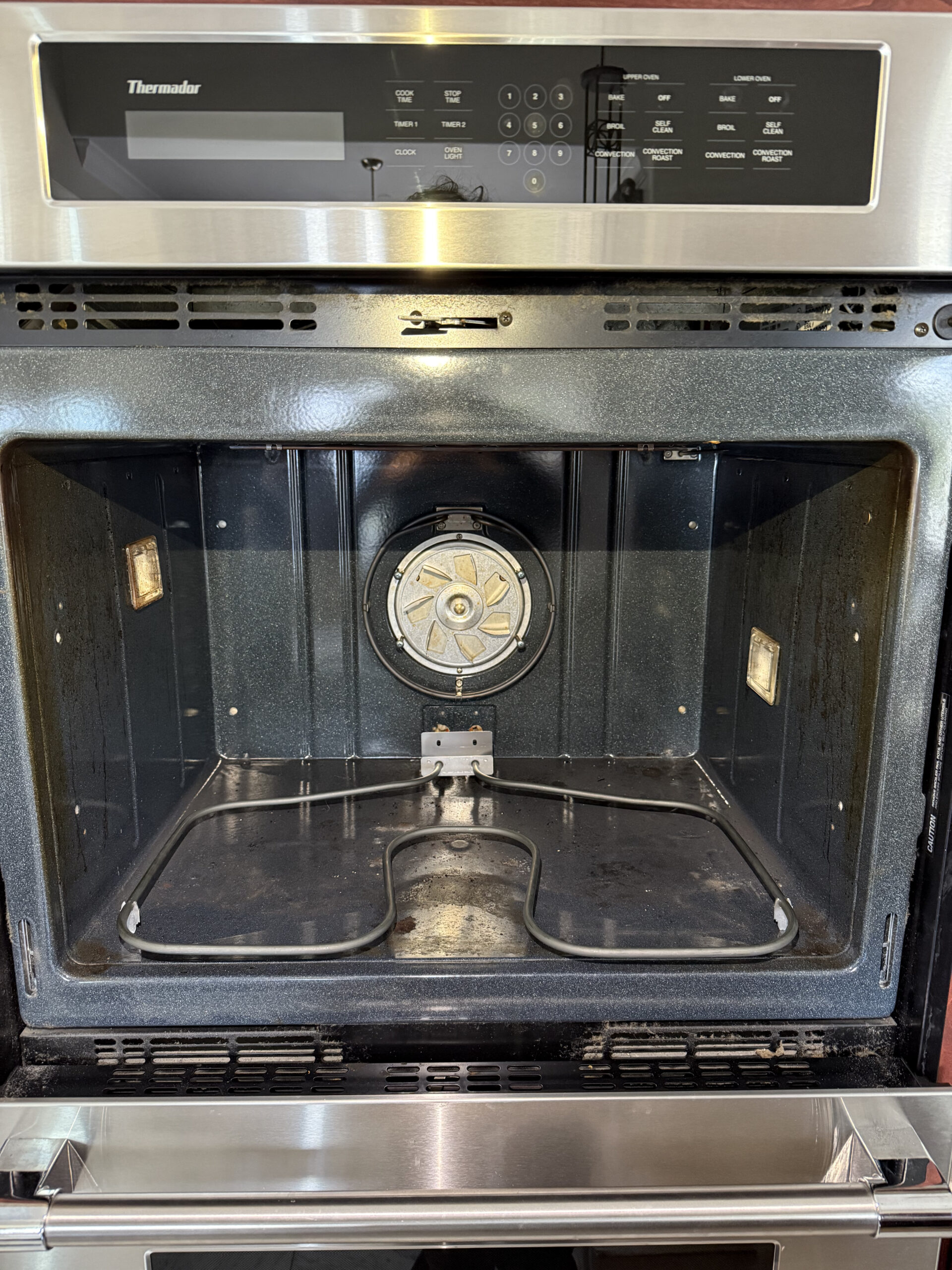Thermador Oven Not Heating Enough? Here’s How I Fixed It
I was called out to a 20-year-old Thermador built-in oven that wasn’t heating properly. The homeowner complained that it took forever to heat up and just didn’t get hot enough for cooking. After some inspection, I figured out the issue and fixed it.
Identifying the Problem
The first step was to unplug the oven—safety is key when working with any electrical appliance. After disconnecting the power, I took a look inside and noticed the heater element wasn’t functioning properly. It wasn’t completely burned out, but it wasn’t providing enough heat either. The damage was enough that it was causing the oven to heat inefficiently, resulting in long cooking times.
Replacing the Heater
To get to the problem, I had to remove the convection fan cover and the oven door. With everything out of the way, I carefully disconnected the wires from the old heater and removed it. As you can see in the comparison, the new heater is much more even, and it’s ready to provide the heat needed to cook properly.
Fixing the Issue
Once the new heater was installed, I reassembled everything, plugged the oven back in, and it started heating properly again. The homeowner was thrilled that the oven was back to normal and working efficiently.
Preventing Future Issues
If your oven is taking too long to heat or not getting hot enough, it could be a problem with the heating element. Always make sure to unplug the appliance before working on it. If you’re unsure of the cause, it’s better to call in a professional to prevent further damage and costly repairs down the road. Regular maintenance can also help prevent similar issues in the future.
In this case, replacing the faulty heating element solved the problem, and the oven was back to its normal heating performance.
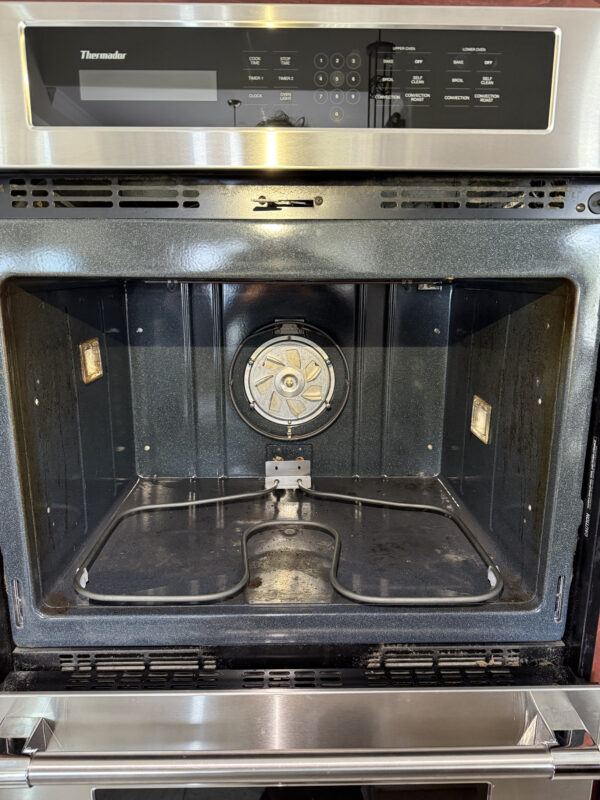
Had to remove the convection fan cover and door to safely disconnect the wires from the old heater and remove it without damaging the casing.
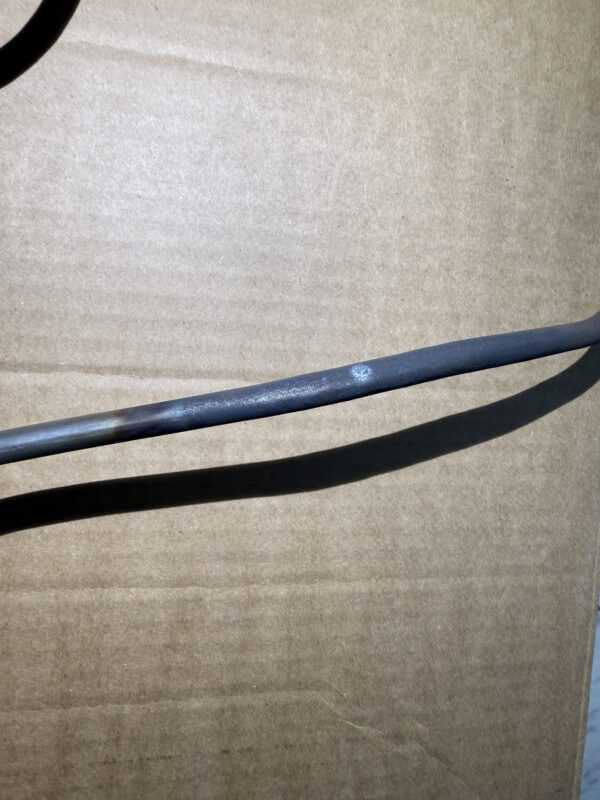
This is the exact spot where the heater burned out.
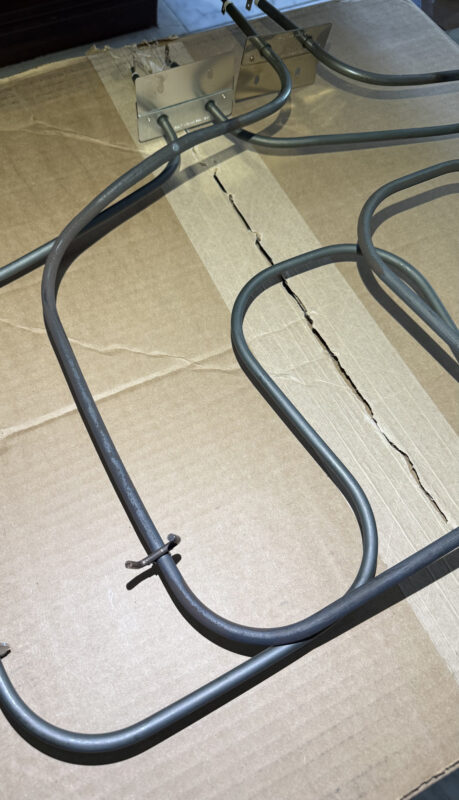
Old heater (top) vs. new heater (bottom)—the new one is more even.
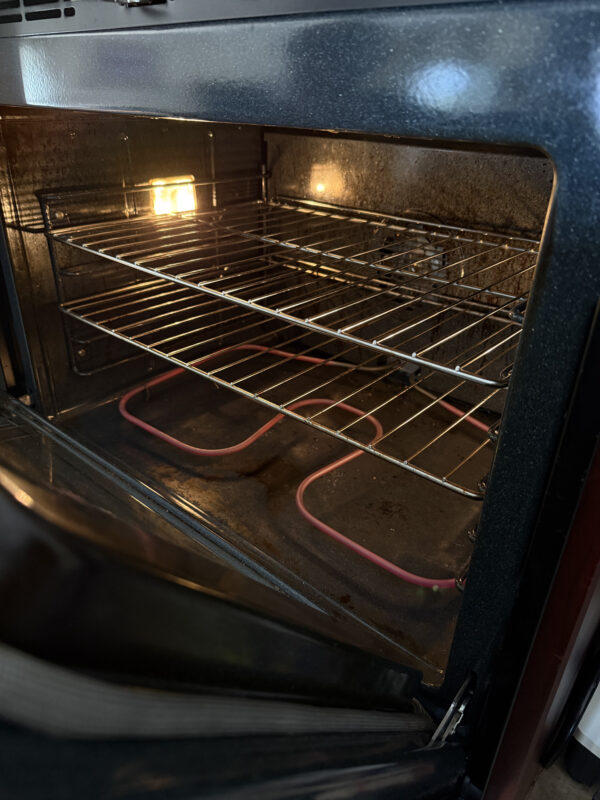
Hooray! It’s heating up. We can move on!

